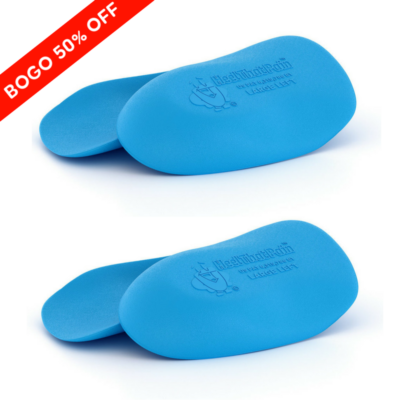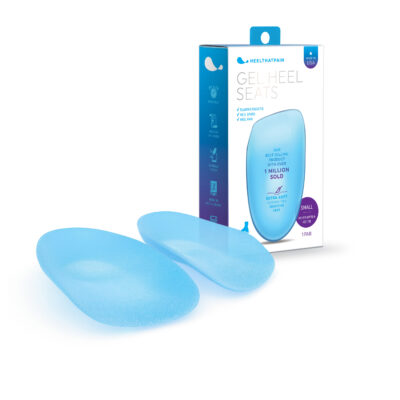Ankle Pain
Because of how your ankle is constructed, ligament sprains and bone breaks or fractures are the most common injuries. However, tendonitis, tarsal tunnel syndrome, and a strained flexor retinaculum, or ankle arthritis can be the culprit of ankle pain as well:
Common Causes of Ankle Pain
Ankle pain can come on suddenly or gradually, and may be mild or very intense. You can take comfort knowing that most ankle injuries can be successfully resolved at home. One study of athletes published in Clinical Sports Medicine showed that the majority of ankle injuries like sprains and tendonitis were rehabilitated successfully with only conservative treatments like icing, rest, and stretching.
If your ankle pain persists, gets worse, or you suspect a fracture, visit a doctor.
The following are the most common causes of ankle pain:
Ankle Sprains
A 28-year study published in Sports Medicine showed that ankle sprains are the most common type of sports injury.
Ankle sprains are the result of ligament damage and can happen during sports, exercise, or even while stepping onto uneven surfaces. Since sprains are essentially tears in the ligaments around the ankle, some sprains are more severe than others, A class I sprain is a small or partial tear, while a class III tear is very severe and may even require ankle surgery.
Treatment: If your sprain is mild, try to stay off the affected foot for a few days, and use ice to bring down swelling and pain. If it’s difficult to put any weight on the affected foot, or the pain is very severe, see a doctor.
Ankle Tendonitis
There are three main tendons in the ankle: the Achilles tendon, the peroneal tendon, and the posterior tibial tendon. Inflammation or overuse of any of these tendons often leads to a condition called tendonitis. If you have tendonitis, you may notice swelling, tenderness, redness and pain in the ankle.
Treatment: Mild cases of ankle tendonitis usually resolve on their own with plenty of rest, ice, elevation, compression, anti-inflammatory drugs as needed, and stretching.
Ankle Arthritis
Ankle pain can also be caused by different types of arthritis that cause inflammation of the ankle joint. Reactive arthritis, gouty arthritis, rheumatoid arthritis, ankylosing spondylitis and psoriatic arthritis are the most common types of arthritis associated with ankle pain and inflammation of the ankle joint.
Keep in mind that arthritis is not caused by a single incident or injury to the ankle joint, but rather develops slowly over time. Symptoms of arthritis in the ankle include swelling, stiffness, warmth in the area, and redness.
Treatment: Depending on your unique situation and health history, your doctor may prescribe a number of treatments to improve your arthritis. These treatments can include medications, analgesics, and sometimes surgery. At home treatments like stretching and exercise can also help certain types of arthritis.
Strained Flexor Retinaculum
The flexor retinaculum is a dense band of tissue that covers the flexor muscles in your ankle (these are the muscles you use when you point your toes down and flex your foot). When this fascia becomes inflamed or injured during sports, running, or standing for long periods of time the ankle can become extremely painful and stiff.
Treatment: Rest, icing, and, compression socks to bring down swelling are generally the top recommended treatments for a strained flexor retinaculum.
Tarsal Tunnel Syndrome
Ankle pain can also be caused by tarsal tunnel syndrome, which results from compression of the nerves in the ankle joint. This nerve compression can be caused by numerous other conditions, including sprains, arthritis, and even plantar fasciitis.
Treatment: Tarsal tunnel is commonly treated with rest, orthotics and physical therapy. If the condition does not improve with modest treatments, surgery is also an option.
All these ankle injuries can take weeks to months to heal. It’s important to allow your ankle enough time and rest before resuming high-impact activities or sports, to avoid the risk of reinjury.
Are Heel Pain and Ankle Pain Related?
Many people experience ankle pain and heel pain at the same time. When one part of the body is compromised, the interconnected web of tissues and bones in the surrounding systems are often affected too.
Tarsal Tunnel and Heel Pain from Plantar Fasciitis
If you have ankle pain related to Tarsal Tunnel Syndrome, you may also be suffering from Plantar Fasciitis. Plantar Fasciitis results from a strained, deteriorating arch that causes the feet to flatten and struggle to absorb weight and impact–which can put painful pressure on the nerves in your ankle joint, as well as heel pain.
Heel Pain and Ankle Tendonitis
Tendonitis and heel pain can also develop in tandem, especially from overuse in sports or exercise. Constant or high-impact activities may lead to micro-injuries and inflammation of both the tendons near the ankle and the arch of the foot and heel.
Heel and Ankle Pain from Unsupportive Shoes
Wearing unsupportive shoes can be another source of both heel and ankle pain. A study spearheaded by Dr. Alyssa Dufour, PhD. at the Institute for Aging Research of Hebrew SeniorLife found that wearing unsupportive shoes like high heels, slippers, and sandals can cause both heel and ankle pain.
Allowing yourself plenty of rest, supporting your foot mechanics with orthotic inserts, stretching your feet and legs, and keeping up with ankle mobility exercises can help your ankle and your heels stay flexible, injury-resistant, strong, and work together properly.
How Orthotics Can Help Ankle Pain
While most people don’t associate orthotics with ankles, orthotics can be incredibly helpful in supporting and stabilizing a painful or weak ankle. Wearing arch supports keeps the foot gently cupped in place, and helps keep a weak ankle from twisting or turning while you walk.
An injured ankle or an ankle with reduced mobility can also mean changes to your gait–which can put additional strain on the arches of your feet. Wearing orthotics can help the arch of your foot absorb this extra strain and impact without succumbing to Plantar Fasciitis.






